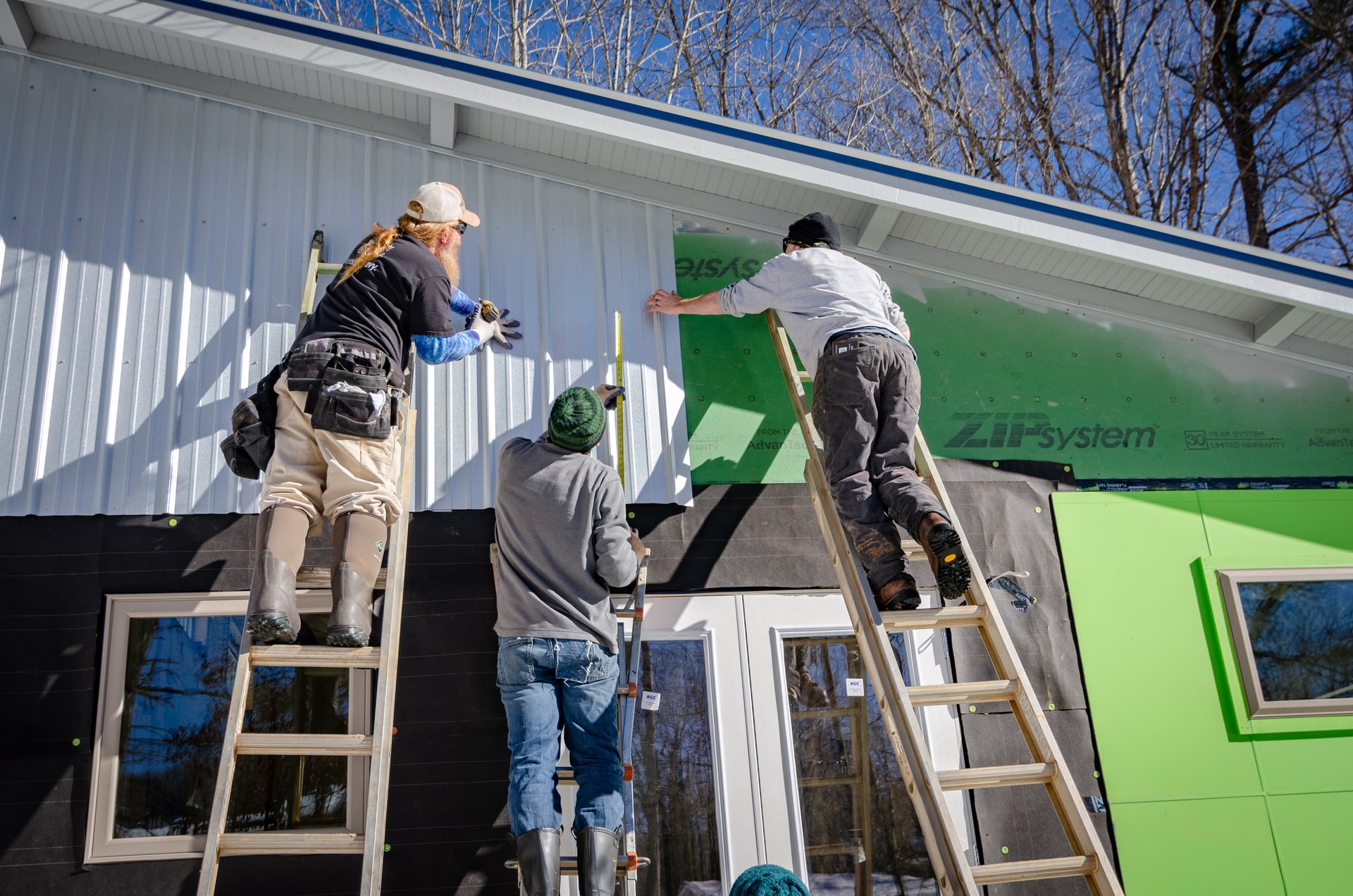If you’re in the construction industry, you already understand that the livelihood of your business heavily depends on your ability to estimate costs accurately. It’s a skill needed to win projects, improve planning, manage resources and boost profit margins. The construction cost estimate process happens long before you and your team step on-site and begins work. This planning takes place in the early stages as you prepare to submit a bid.
In this guide, you’ll learn more about the cost-estimating process. There are multiple methods you can use to arrive at estimates, and it’s good to know your options. You will also learn strategies to improve the cost estimates’ accuracy so you don’t have to reach into your pocket to finish the project.
What Is Construction Cost Estimating?
Construction cost estimating involves projected expenses associated with building a particular project. An individual or team reviews a project, identifies needs, and estimates costs. They factor in the cost of materials, labor and overruns. Many companies create punch lists that identify project tasks before presenting a bid to the project owner.
Why Is Accurate Cost Estimating Important?
Accurate cost estimating is a big deal in the construction industry. This skill impacts people’s livelihoods and the ability to deliver great projects. Here are some of the reasons why cost estimating is vital for contractors.
Improved Project Planning
It’s challenging to execute a construction project and meet deadlines on time without proper planning. Each construction project has many components involved, and any confusion can significantly increase expenses and cause delays. Not only do you need to coordinate supply purchases and ensure you have enough manpower to complete the task at hand, but you also need the funds to make it happen.
But if you underestimate costs, it could derail the plan you developed for the project. As some construction teams get closer to their budgets, they may get tempted to cut corners and apply cost-cutting measures. These practices can result in a lower quality end-product that can have more problems in a few years. It can also result in a lot of back-and-forth arguments and stall development.
Project managers and contractors want to get the job done well and then move on to the next construction project. Staying stuck on the same project for too long limits the amount of additional work they can handle.
Higher Profit Margins
Overestimating and underestimating construction costs can have negative consequences. If you overestimate the costs, you’ll likely lose bids to other contractors. Clients want the perfect blend of low prices and great quality. Many businesses give preference to lower prices. While lower prices do not translate into better services, pricing yourself too high can scare away clients. However, it’s necessary to have high bids for some projects to maintain profit margin goals and paint realistic expectations.
If you underestimate the costs of a construction project and win bids, you’ll have lower profit margins. On the other hand, cost-cutting measures or asking the client for additional funds for the project can result in a negative experience for everyone and hurt your company’s credibility. Effective cost estimates help construction companies achieve the perfect balance.
More Accurate Resource Management
You’ll also want to know how much will be spent on materials and labor during each phase of the process. By accurately estimating these expenditures, you’ll be able to manage your company’s cash flow more effectively. Tracking this data and holding onto it can help with future construction cost estimates. Individuals and teams can analyze this data to see what worked and how to lower costs without sacrificing quality. Using cost estimates and breaking them down by each expense category reduces wasted dollars.
Higher Contractor Reputation
Losing bids isn’t the only negative consequence when you overestimate the costs of a construction project. Your company could also take a hit to its reputation or be regarded as a business that wants to rip others off. But if you accurately estimate construction costs, you could get a boost to your reputation as a contractor. Clients will refer you to their colleagues, and some clients may need a long-term construction company to assist with multiple projects. Treating clients well pays off in more ways than you can expect.
Who Prepares Cost Estimates?
It would depend on the size and scope of the project. Sometimes it’s an internal individual or team within the construction company. Internal members usually have access to more data points and are deeper in the know about how the construction company operates and works on projects. At other times, a contractor and subcontractors prepare cost estimates. These individuals may solicit input from engineers and architects to confirm that the calculations are accurate. But it’s not uncommon to see cost estimates prepared by construction sales representatives, qualified independent estimators or in-house estimators at architectural firms.
The 5 Levels of Construction Cost Estimates
Each construction project proposal goes through five stages before companies and contractors make bids on projects. Understanding how these levels of estimates work can help you navigate the cost estimate process more smoothly.
Level 1: Order of Magnitude Estimate
During this preliminary stage, a contractor will estimate if the project is feasible. This estimate ignores design documents and other specifics, as it makes no sense to dive deeper into a project if you can tell it will be unprofitable.
Level 2: Schematic Design Estimate
The design team works together to assess the scope of the project. For this stage, an architect or design team produces a schematic design. The lead architect and project owner tend to have the most conversations during this stage of the project. Architects frequently use online tools for schematic design so they can present 3D models and make quick changes to the model if necessary. Schematic designs lay out the interior and exterior details of the project to demonstrate what it may look like upon completion. A schematic design allows project managers to create a more accurate cost estimate, but there are a few more levels left before presenting a bid.
Level 3: Design Development Estimate
The schematic design is like a rough draft. Once it gets approved, an architect creates a more detailed design that enables a more accurate cost prediction.
Level 4: Construction Document Estimates
A project manager or contractor will review the construction documents to incorporate more resources for the estimate. This stage utilizes blueprints, details about the project, and other specifications. It’s a more detailed cost estimate that gets you closer to making your bid.
Level 5: Bid Estimate
After completing the other stages of the cost estimate process, it’s time to present a bid. The bid estimate factors in the design, cost of materials, labor, and other expenses. Project managers and contractors have done most of the work prior to this stage. The bid estimate gathers final data pieces and consults a few additional resources. As you do more bid estimates, it will become easier over time. This is the price you will use when reaching out to clients and making proposals.
The Cost Estimating Process
There isn’t a uniform way to estimate construction costs. It’s open to interpretation, but most estimators use one of these three construction cost estimating models:
The Rule of Two Method
This method focuses on labor costs to gauge the total cost of the construction project. It’s a straightforward approach where an estimator calculates the cost of labor and doubles it. The estimate concludes with a 10% buffer. For instance, if labor costs $500,000, a project manager would double it to $1 million and tack on an additional 10% ($100k — take 10% from $1 million)—the Rule of Two Method results in a $1.1 million cost estimate.
This calculation is simple to perform, but it relies on a project manager’s ability to calculate the cost of labor. A project manager can reach this estimate by knowing how many people will work on the project each day. For example, if you have 10 laborers working on-site each day, you can calculate their daily earnings and multiply that value by the number of days you expect the project to take. Then, it’s easier to calculate total costs with the Rule of Two Method.
However, the calculation can go astray if the cost of materials rises more than expected. This method ignores other expenses that can change during a construction project, as well as indirect costs like administrative salaries.
The Square Foot (or Budget) Method
Project managers who use the square foot method look at past construction projects in the area. You don’t have to guess if you use hindsight. Instead, project managers can look at established budgets and actual costs from construction projects in the same area from previous years. Understanding trends in construction project budgets in your area can help you set a more reasonable estimate for your project.
Project managers look at this data and calculate the cost per square foot for those projects. If the average cost per square foot is $100/square foot, and you are working on a 10,000-square-foot project, you can use this method to estimate a $1 million budget for the project. Most of your expenses will go toward labor and materials, but you should set an additional buffer to give yourself breathing room in case the project goes over budget.
The Unit Pricing Method
The unit pricing method is a popular cost estimate approach. First, project managers figure out the average cost per square foot and average hourly payment for workers. They then calculate the project’s number of square feet and multiply it by the average cost per square foot. Project managers also perform this step for hourly payments. Finally, they multiply the average pay per hour by the number of hours they expect to pay laborers for the entire project. It’s easier to adapt when using the unit pricing model if you anticipate needing additional labor hours or square feet.
Tips on Improving Accuracy
Getting the cost estimate right the first time is important. Clients will enjoy working with you and may recommend you to their partners. Contractors who accurately predict construction budgets will become more in demand and can set higher rates for their services. Everyone involved in the project wants an accurate cost estimate. These tips will help you get closer to the actual number with your first projection.
Review Past Similar Projects
A project manager’s construction project isn’t the first one in the area, and it certainly won’t be the last. Project managers can benefit from reviewing similar projects that took place a few years ago in the same area. You can get detailed information about past construction projects, ranging from the total budget to expenses across multiple categories.
Those projects can help you get familiar with a location you have no prior experience and set more accurate cost estimates. Don’t reinvent the wheel when others have paved the path for you.
Develop a Template
Templates save time and let you create systems for your business. Project managers can use templates that provide cost estimates if they input data points. For instance, if you know the average cost of a laborer’s hour, you can input a set number of hours to see how your budget changes with 10,000 total hours of work versus 12,000 total hours. This approach gives you a foundation instead of having to start from scratch. Save it in a safe place like your computer that’s easily accessible when you need it. Using an Excel spreadsheet can save time in the construction process.
Verify Material Prices
Material prices fluctuate with changes in market conditions. Demand, supply, inflation, interest rates, and other factors can impact material costs. What you paid last week could be far lower or higher than what you’ll pay today, and it would be very unfortunate if your cost estimate were computed based on inaccurate pricing data. Project managers should look at recent material costs and continue monitoring prices to stay on top of fluctuations.
Confirm Local Labor Data
Like material prices, labor rates could also fluctuate with demand. Do your homework and refer to local labor data to accurately price out projected labor costs. Prices vary based on location and can get more expensive for city projects.
Determine Nearby Suppliers
Are there suppliers near the construction site, or can it take several hours to haul materials to the construction site? If suppliers are further away, it will increase your shipping costs. While unlikely, accidents happen on the road, and a longer commute time increases the likelihood of this risk. It’s best to have nearby suppliers to keep costs low, but if suppliers are far away, you should consider that detail when constructing your budget.
Review Insurance Costs for the Area
Insurance plans vary by location. Flood insurance costs more in Florida than in other places due to the heightened risk of hurricanes. Each location has its own nuances, and insurance providers adjust their premiums accordingly. It’s an indirect cost that will impact your bottom line.
Check Subcontractor Proposals
If you subcontract the work to another company, you must request proposals instead of playing the guessing game. Otherwise, you could end up coming out of pocket to cover their costs if you win the bid. This approach saves time, but it makes you more reliant on an external source for a critical component of your construction company’s success and stability.
Keep Track of Indirect Costs
Indirect costs are easier to forget. These costs do not directly impact a project. They aren’t related to on-site labor or materials, but these indirect costs are required to keep a construction company running. Administrative costs, office buildings, and insurance policies are some of the indirect costs that affect overall profit margins. A small profit margin from a project can get wiped out by indirect costs. However, you can spread indirect costs across multiple projects. The more projects your construction company does each year, the less impact indirect costs have on each one. However, it’s important to know these numbers so you don’t get caught by surprise when balancing the books.
Meticulously Review Construction Documents
Many construction cost estimate mistakes take place because project managers, contractors, and other groups do not adequately review vital documents. These documents are detailed, and it’s easy to skim through these resources. Rushing through these documents can increase the likelihood of errors. If you create these documents, using bold font and bullet points can make key points stand out.
Check Your Work
A single computational error can spread like a contagion throughout your cost estimate model. Spreadsheets make it easier to check your work by reviewing formulas and how you incorporate each cell into those formulas. On the other hand, it’s more difficult to check your work if you do it by hand.
Get More People Involved
Construction projects involve many people with various professions. Getting expert opinions from architects, designers, engineers, and supervisors can help you get a more accurate estimate. It’s also good to have these people communicate with each other during the cost estimate process. Effective communication will speed up a project, minimize wasted dollars, and create synergies you can carry into future projects.
Visit the Construction Site to Monitor Progress
Making occasional trips to the construction site can increase productivity among laborers knowing you have a close eye on them. Monitoring the site itself can also help you see the environment’s impact on progress and possible roadblocks you can expect. Visiting the site in-person will help you ask better questions and understand how the construction project is moving along.
Check the Weather
The weather has a significant impact on the total costs of a construction project. Bad weather can impede progress, and some weather conditions can put you a few steps back. Dry weather ages equipment, and it’s not a good idea to pour concrete during a rainstorm. You won’t know the day-to-day weather conditions when constructing your proposal, but you can pay attention to the weather to increase your odds of staying within the budget. If the construction project is in an area that’s known for bad weather, you may want to consider a higher margin of safety in your cost estimate.
Review Your Equipment
Construction projects require great equipment that performs the job well and is safe for workers to use. Some project managers may need to update some of their equipment due to older assets experiencing wear and tear. You can minimize costs in the long run by purchasing equipment and getting financing instead of leasing equipment. Equipment loan payments go away eventually, but lease payments never stop until you no longer need the equipment. Leasing is a great choice for short-term needs, but if you find yourself using the same equipment often, financing is the more cost-effective approach for durable companies. If you buy new equipment, you can look for ones that use new technology that can make the project more efficient.
Use Estimating Software
Construction cost estimating software will require an investment but is usually well worth the cost. You will spare yourself the hassle of sorting through spreadsheets and performing complex calculations to come up with projections. Plus, you’ll have what you need to bid on projects in record time.
As you establish yourself as a key player in the construction industry, the need for increased capital could arise. Bank loans and business lines of credit are viable options, but there’s also a viable materials financing option worth considering.







